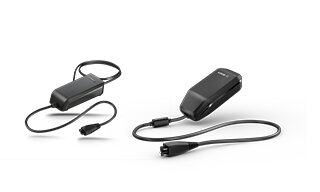MinnesotaMiles
New Member
I'm a life long cyclist who would like to use my e-bike to go farther and faster. For me THE biggest challenge is charging while on the road. Solutions include carrying multiple batteries and fast charging.
The first solution requires that people carry multiple heavy batteries, which eventually need time and location for charging.
The second solution, that of fast charging would be the most elegant solution, but is currently not available, that I'm aware.
Fast charging could be offered as an fee based service in any type of business that would support people lingering while their battery is charging, (ie coffee shop, bike shop, restaurant).
IMO the solution to this problem would not be expensive as BEV's are addressing it, and it would open up an entirely new vacation industry where people could tour as long as they wanted without having to worry about range. Think of the motorcycle touring industry, but where people actually get some exercise. Additionally, people of different athletic ability could actually travel together.
The first solution requires that people carry multiple heavy batteries, which eventually need time and location for charging.
The second solution, that of fast charging would be the most elegant solution, but is currently not available, that I'm aware.
Fast charging could be offered as an fee based service in any type of business that would support people lingering while their battery is charging, (ie coffee shop, bike shop, restaurant).
IMO the solution to this problem would not be expensive as BEV's are addressing it, and it would open up an entirely new vacation industry where people could tour as long as they wanted without having to worry about range. Think of the motorcycle touring industry, but where people actually get some exercise. Additionally, people of different athletic ability could actually travel together.




